Comprehensive Human Neuropsychology: Brain Structures, Functions, and Imaging Techniques
1/224
There's no tags or description
Looks like no tags are added yet.
Name | Mastery | Learn | Test | Matching | Spaced |
|---|
No study sessions yet.
225 Terms
What is neuropsychology?
The study of the relationship between brain function and behavior.
What are the main fields that contribute to neuropsychology?
Biology, anatomy, physiology, psychology, and philosophy.
What is the focus of human neuropsychology?
How the brain and nervous system influence human behavior, cognition, and emotions.
What is a case study example illustrating neuropsychology?
L.D., a cook who experienced behavior changes after a traumatic brain injury, despite normal cognitive test scores except for attention and verbal memory.
What brain changes were observed in L.D. after his injury?
Damage to both sides of the brain and decreased glucose flow, indicating atrophy.
Why is neuropsychology important?
It studies brain areas associated with cognitive domains and examines brain changes due to age, disease, or trauma.
How is neuropsychology typically studied?
By working with individuals who have brain lesions, injuries, or neurological disorders, often using cognitive tests and brain imaging.
What is trepanning?
An ancient procedure involving drilling holes in the skull, possibly used for relieving pressure or treating mental disorders.
What significant development occurred in neuropsychology in 1913?
The term 'neuropsychology' was first used to describe studies related to brain injury, disease, and mental illness.
What was phrenology?
A pseudoscience introduced in 1796 that claimed the shape of the skull determined personality traits.
What did Broca and Wernicke contribute to neuropsychology?
They correlated neuroanatomy and neuropathology, identifying areas of the brain associated with language.
What is the significance of amnesia studies in neuropsychology?
They helped identify specific brain structures essential for memory and demonstrated different types of memory.
What is split-brain syndrome?
A condition resulting from severing the corpus callosum, affecting communication between the brain's hemispheres.
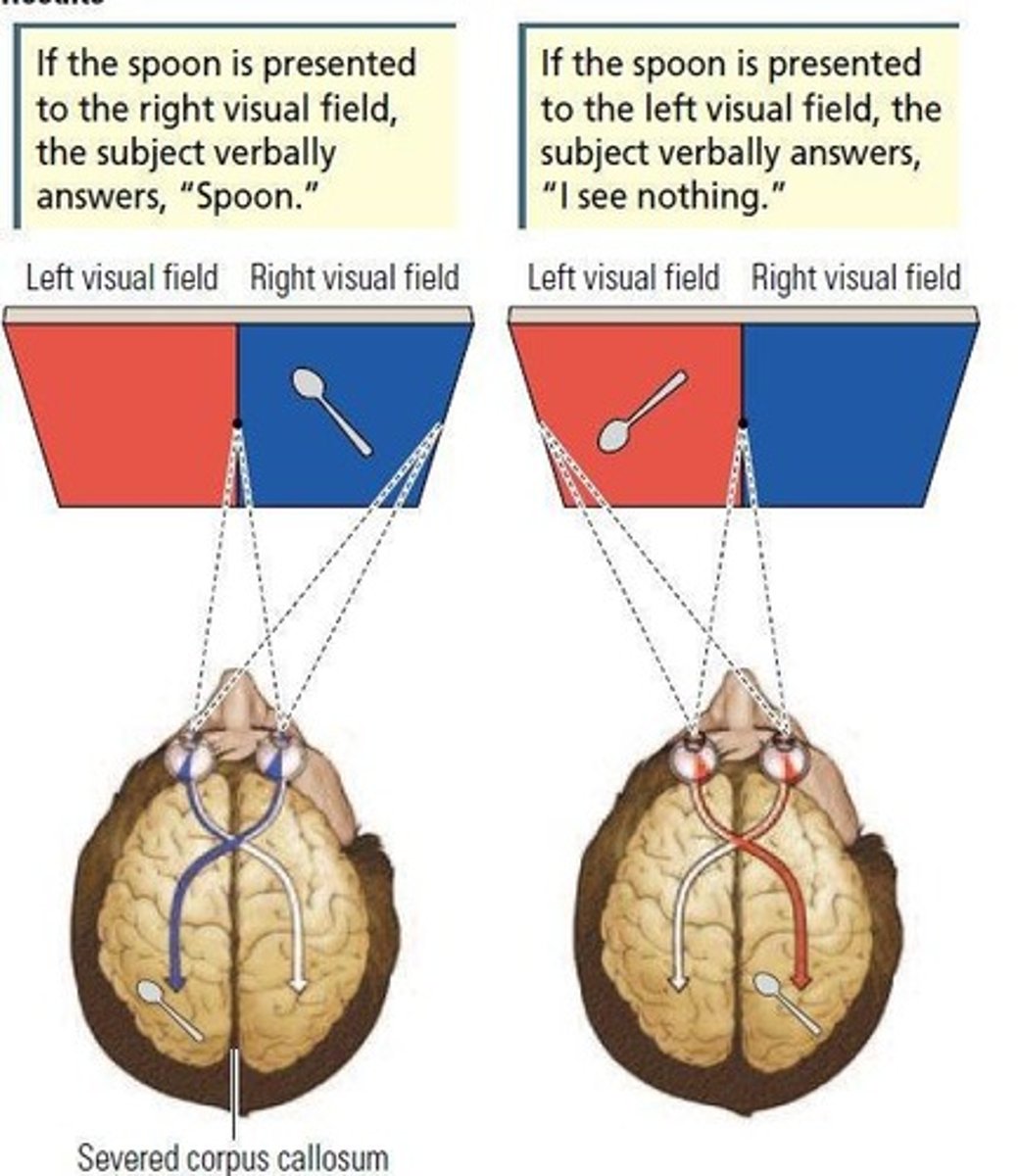
What was discovered about visual perception in blindsight patients?
They can report information about stimuli despite lacking conscious visual perception due to damage to the visual cortex.
What do lesion studies reveal about brain function?
They show specialized functions of the cerebral hemispheres, with different abilities affected by damage to specific areas.
What cognitive abilities were affected in G.H. after his right posterior injury?
Difficulties with copying drawings, assembling puzzles, and navigation.
What cognitive abilities were affected in M.M. after his left posterior tumor?
Difficulties with solving arithmetic problems, reading, naming objects, and copying movements.
What does lateralization in the brain refer to?
The specialization of functions in each hemisphere, such as language in the left hemisphere and spatial skills in the right.
What are some applications of neuropsychology?
Used in psychiatry, physiotherapy, neurology, forensics, law, and speech and language pathology.
What advancements in neuroimaging occurred in the 1980s?
Development of tools like CT scans that allow real-time imaging of the brain.
What is the importance of studying brain injuries in neuropsychology?
It helps establish connections between brain function and behavior, aiding in rehabilitation and treatment.
What is the primary role of neuropsychologists?
To serve as expert diagnosticians trained in identifying and labeling various neurological and psychiatric disorders.
What are the key components of a full neuropsychological evaluation?
Characterizing cognitive strengths and weaknesses, linking these to select appropriate interventions, estimate patient outcomes, set goals, and direct proper services.
What are some common neurodevelopmental disorders in childhood?
ADHD, learning disabilities, intellectual disabilities, autism, and others.
What conditions can affect children that neuropsychologists assess?
TBI, toxic exposure, cancer, chromosomal and genetic disorders (e.g., Fragile X, Down syndrome), cerebral palsy, and seizure disorders.
What is an example of a situation where a neuropsychologist is consulted for a child?
A parent brings their son to assess for dyslexia, requiring the neuropsychologist to evaluate behavior, cognitive tests, and medical work.
What is the significance of conducting a full workup for a child suspected of having dyslexia?
It helps to identify additional issues, such as ADHD, and to select appropriate interventions and services.
What are some neurodevelopmental disorders affecting young-middle adults?
TBI, multiple sclerosis, cancer, infections (e.g., meningitis), and substance use disorders.
What neurodegenerative disorders are common in older adults?
Alzheimer's disease, Lewy body pathology, stroke, TBI, epilepsy, psychiatric conditions, delirium, and hydrocephalus.
What is the role of neuroimaging in neuropsychology?
To combine brain imaging techniques (like PET scans) with cognitive tests to diagnose conditions such as mild cognitive impairment or early dementia.
What is the function of the central nervous system (CNS)?
To process information from the brain and spinal cord, protected by the skull and vertebrae.
What are the two main parts of the peripheral nervous system (PNS)?
The somatic nervous system (SNS) and the autonomic nervous system (ANS).
What does the somatic nervous system (SNS) consist of?
Sensory pathways that bring information into the CNS (afferent) and motor pathways that connect the CNS to muscles (efferent).
What is the role of the enteric nervous system (ENS)?
To manage digestion and sensory/motor connections to internal body organs.
What are the anatomical orientations of the brain?
Dorsal (top), ventral (bottom), anterior (front), posterior (back), medial (inner/middle), and lateral (outer/sides).
What are the clefts and ridges on the brain called?
Clefts are called fissures (deep) or sulci (shallow), and ridges are called gyri.
What is the function of the corpus callosum?
To act as a communication pathway between the two hemispheres of the brain.
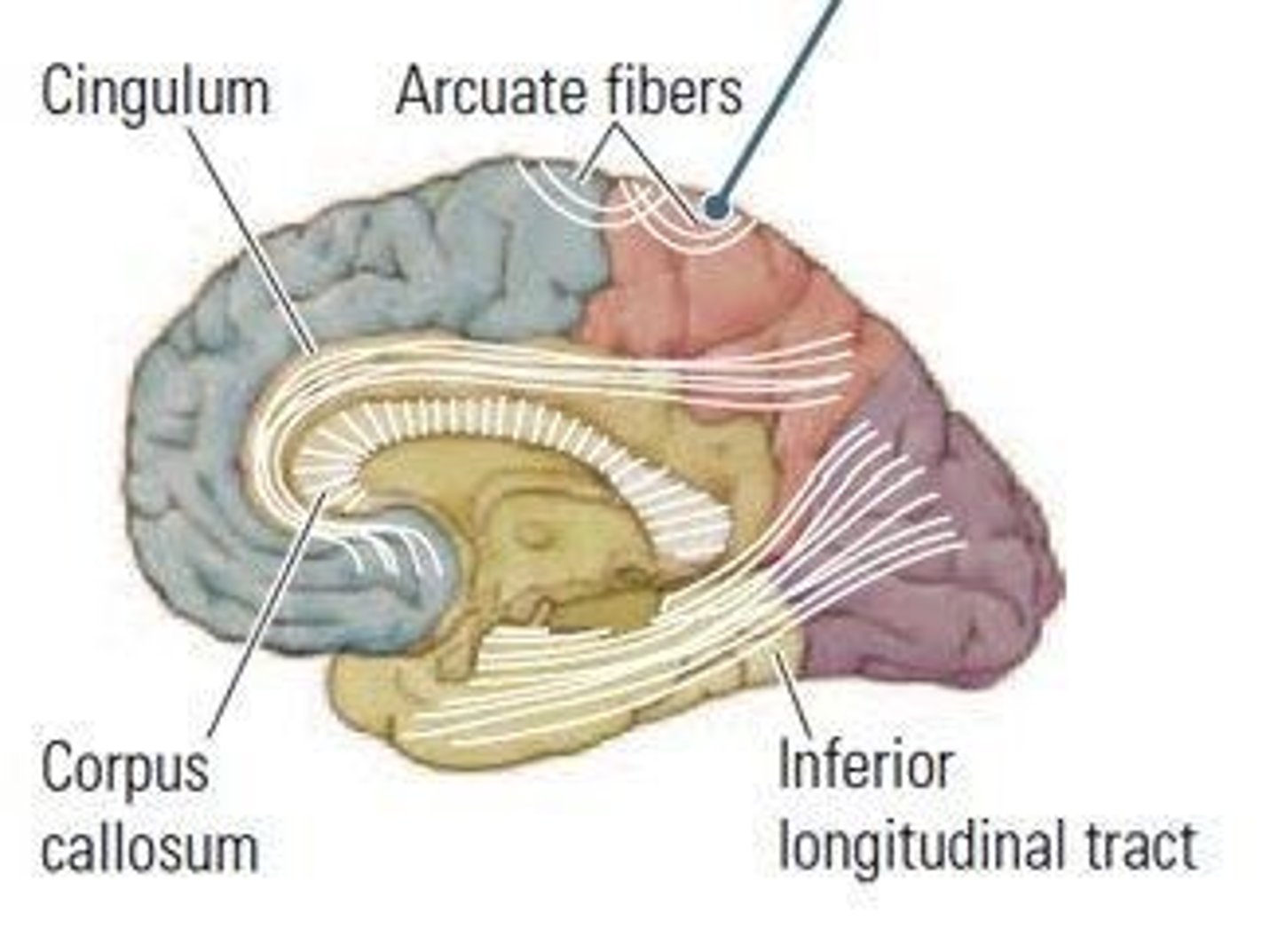
What are the four lobes of the brain and their primary functions?
Frontal lobe (executive functions), parietal lobe (sensory information), temporal lobe (hearing and memory), occipital lobe (visual processing).
What is the role of the cerebellum?
To process and regulate signals between other parts of the brain and body, coordinating movements.
What structures are included in the forebrain?
Cerebral hemispheres, basal ganglia, limbic system, thalamus, and hypothalamus.
What functions does the hypothalamus control?
Body hormone production, temperature regulation, feeding, sexual behavior, sleeping, emotional behavior, and movement.
What percentage of the body's weight is the brain?
0.3% of the body's weight
What is the function of the thalamus?
Channels sensory information to the cerebral cortex from all sensory systems; acts as a gateway for sensory information.
What are the main functions of the midbrain?
Contains neural circuits for hearing, seeing, orienting movements, and pain perception.
What role does the cerebellum play?
Involved in motor coordination, motor learning, and maintaining body equilibrium, including posture and balance.
What is the function of the reticular formation?
Involved with sleep-wake behavior and behavioral arousal; consists of a complex pathway of neurons through the brainstem.
What are the functions of the pons?
Controls hearing, facial movements, and balance.
What vital functions does the medulla oblongata control?
Breathing, heart rhythm, swallowing, and blood pressure.
What is the brainstem?
The bottom part of the brain that connects to the spinal cord, regulating body functions and controlling balance.
What are the four main types of cerebral connections?
Projections between lobes, projections within a lobe, interhemispheric connections, and connections through the thalamus.
What is grey matter?
The outer surface of the brain, making up 40% of the brain, containing dendrites, axon terminals, and cell bodies, involved in cognitive processing.
What is white matter?
Makes up 60% of the brain, contains myelinated axons, involved in signal transmission, and acts as an insulator.
What is the function of cerebrospinal fluid (CSF)?
Cushions the brain, washes out impurities, and brings nutrients.
What is cerebral asymmetry?
The concept that both hemispheres of the brain are similar in structure but responsible for different functions, also known as cerebral lateralization.
What functions are primarily associated with the left hemisphere?
Language processing, arithmetic, and analytic thinking.
What functions are primarily associated with the right hemisphere?
Visuospatial processing, emotional processing, and holistic thinking.
What is the spinal cord's role?
Acts as a pathway for impulses to and from the brain, controls automatic reflexes, and regulates body movement and functions.
What are the three main functions of the spinal cord?
Pathway for sensory and motor impulses, controls automatic reflexes, and regulates body movement and functions.
What is the autonomic nervous system?
Sends motor impulses to visceral organs and operates without conscious effort.
What are the two divisions of the autonomic nervous system?
Sympathetic (fight or flight) and parasympathetic (rest and digest).
What are the steps in neurotransmission?
Synthesis, release, receptor action, and inactivation.
What are small molecule neurotransmitters derived from?
Food and break down into acetylcholine (ACh), amines, and amino acids.
What is the role of the posterior root in spinal nerves?
Brings in sensory information through afferent fibers.
What is the role of the anterior root in spinal nerves?
Sends out motor information through efferent fibers.
What is the significance of the spinal reflex arc?
Allows for rapid involuntary responses by connecting sensory neurons to motor neurons without sending information to the brain.
What is brain lateralization?
The ability of the two hemispheres to function independently and have distinct identities, with certain functions localized in one hemisphere.
What is the role of acetylcholine in the nervous system?
Essential for communication between motor neurons and muscle fibers; key for 'rest and digest' in the parasympathetic nervous system; involved in learning, memory, arousal, and attention.
What are the functions of dopamine?
Involved in movement, attention, learning, and reinforcing behaviors.
What is the role of serotonin?
Regulates mood, aggression, appetite, arousal, pain perception, and respiration.
What does norepinephrine affect?
Affects alertness, arousal, attention, and stress response.
What is epinephrine's role in the body?
Involved in the stress response and the 'fight or flight' system.
What is the function of glutamate?
Involved in learning, memory, motor function, pain perception, and neuropsychiatric disorders.
What does gamma-aminobutyric acid (GABA) do?
Associated with stress and anxiety, mood, sleep, and pain perception.
What is the role of histamine in the brain?
Controls arousal and waking, and constriction of smooth muscles.
What are neuropeptide transmitters?
Made through translation of mRNA from instructions in neuronal DNA.
What are transmitter gases?
Synthesized in the cell as needed.
What are the behavioral effects of the cholinergic system?
Influences waking behavior, attention, and memory; reductions relate to Alzheimer's.
What are the effects of the dopaminergic system?
Coordinates movement, regulates mood, and is involved in addiction; loss of dopamine results in Parkinson's.
What does the noradrenergic system influence?
Affects emotions, learning, and can lead to depression when levels are low.
What is the role of the serotonergic system?
Involved in wakefulness, learning, and can be linked to depression, schizophrenia, OCD, and sleep apnea.
What happens to an electrical signal when it reaches the end of the dendrite?
It transforms from an action potential into a chemical message that crosses the synaptic cleft.
True or False: The signal is always turned into another action potential after passing to the next neuron.
False; the signal can be minimized so it doesn't continue.
What are the two hemispheres of the brain connected by?
The corpus callosum.
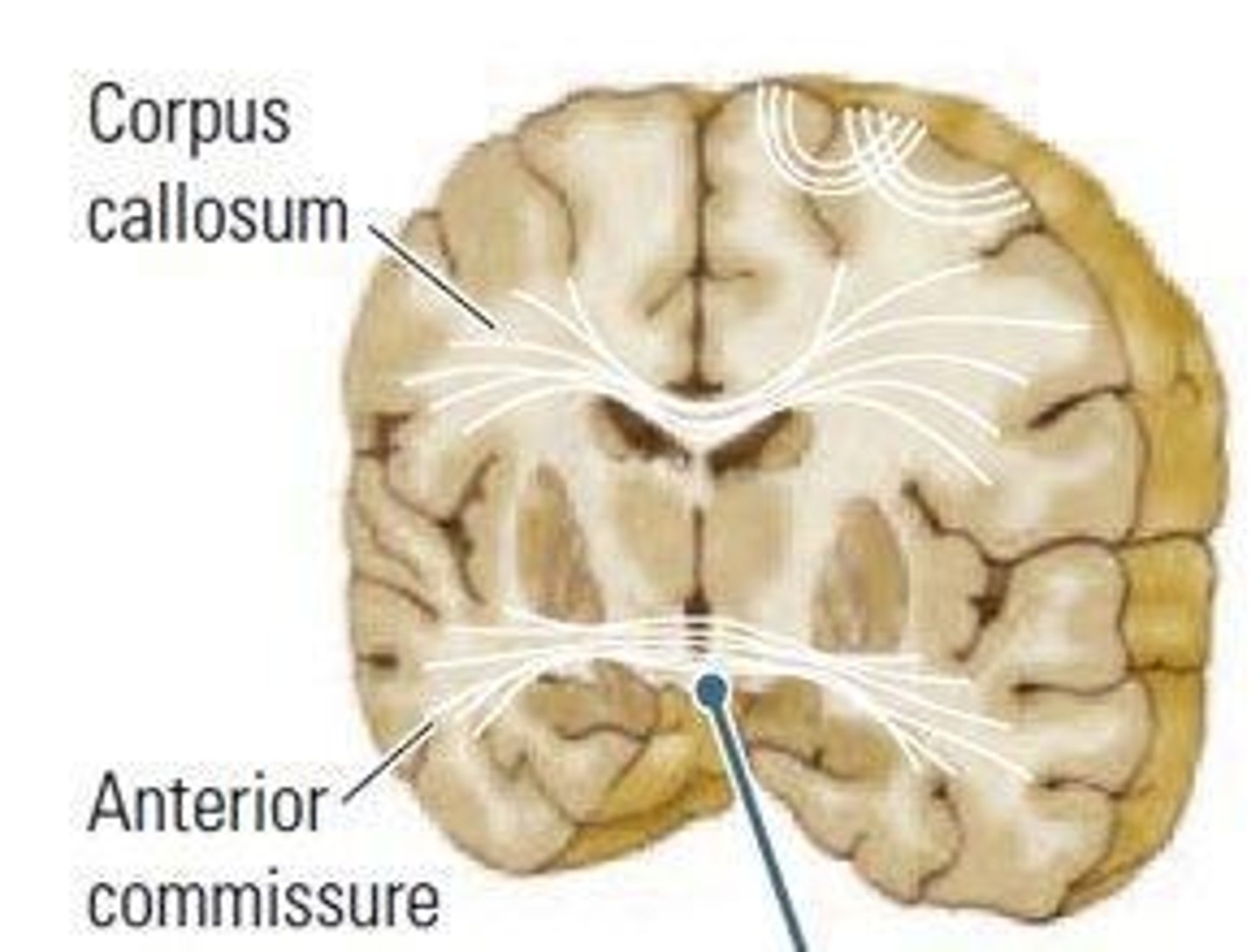
What are the four lobes of the cerebral cortex?
Frontal, temporal, parietal, and occipital lobes.
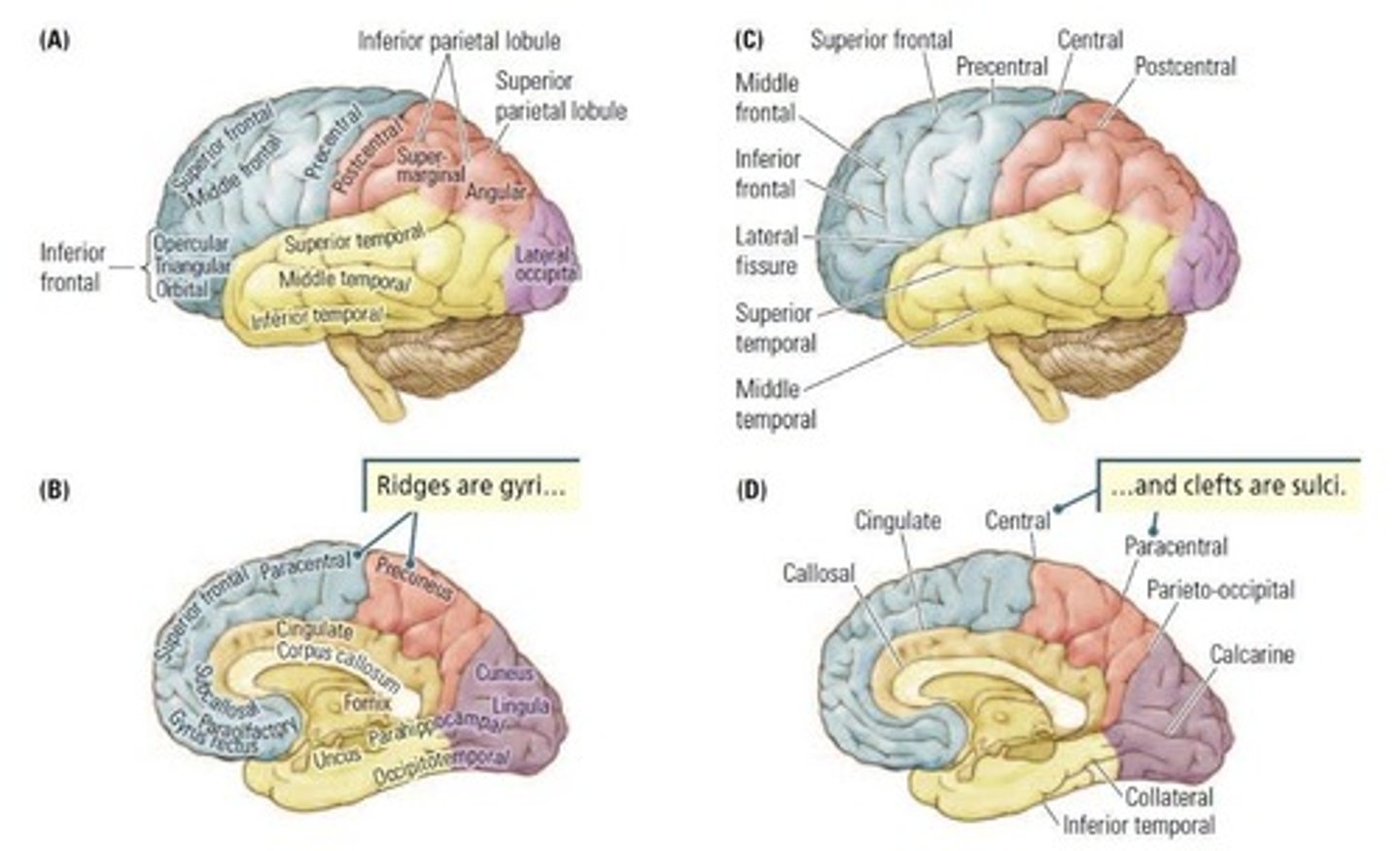
What does the hypothalamus regulate?
Homeostasis, including temperature, hunger, and thirst.
What is the function of the brain stem?
Controls basic life functions such as breathing and heart rate.
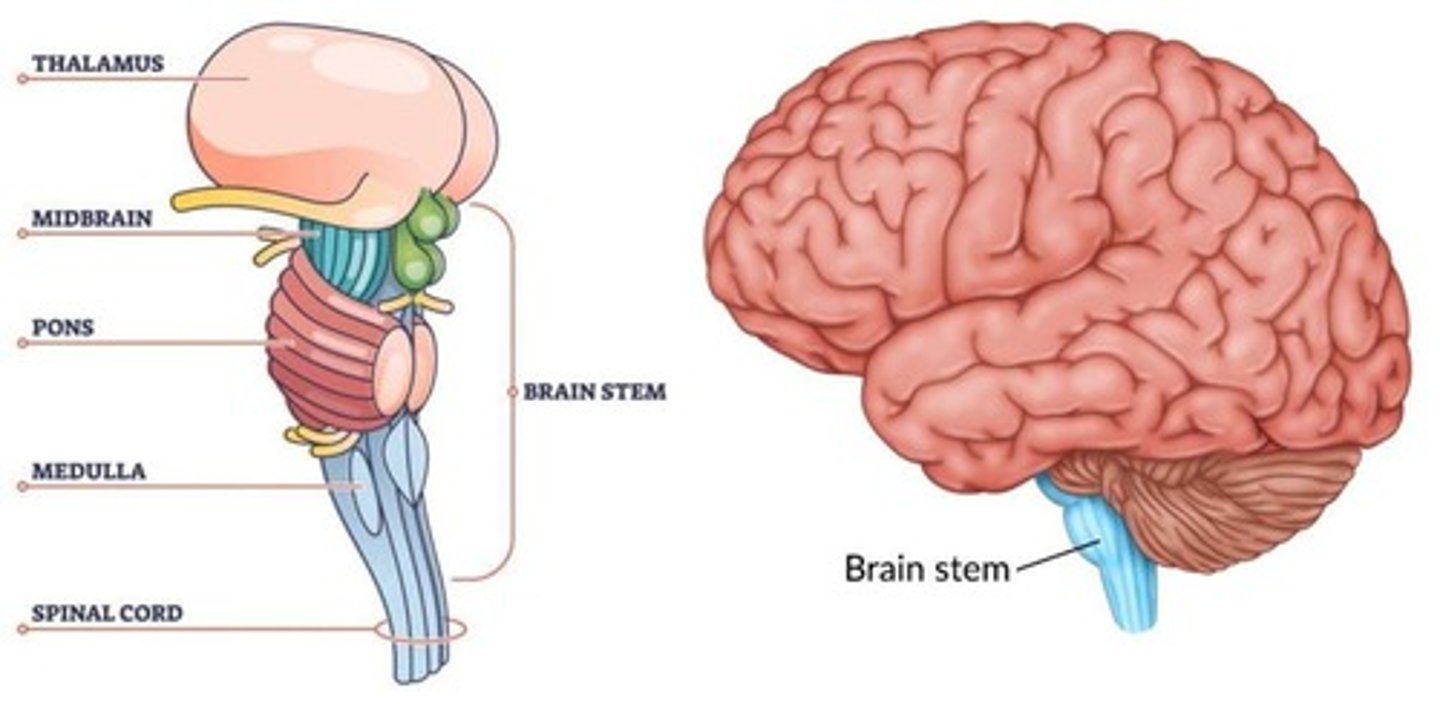
What is the difference between gray matter and white matter?
Gray matter contains neuronal cell bodies, dendrites, and axon terminals; white matter consists of myelinated axons.
What does the longitudinal fissure separate?
The left and right hemispheres of the brain.
What is the role of the frontal lobe?
Involved in executive functions such as planning and includes the motor cortex.
What is the function of the parietal lobe?
Includes the somatosensory cortex and is involved in goal-oriented movement.
What is the primary function of the occipital lobe?
Involved in vision.
What does the temporal lobe specialize in?
Involved in language, memory, and music.
What can a CT scan localize in the brain?
Brain tumors and lesions, appearing darker on the scan.
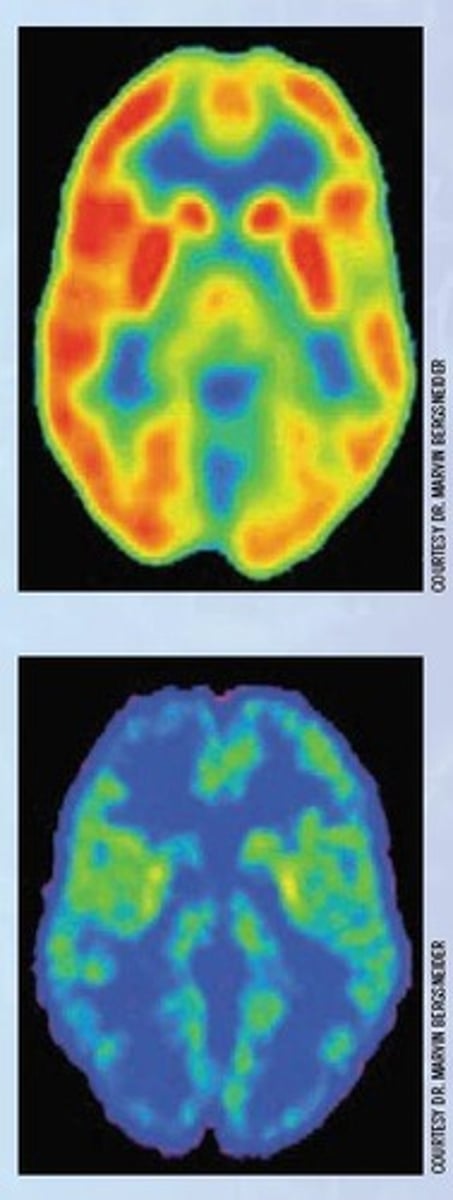
How does a CT scan differentiate between types of neural tissue?
It shows skull as white, grey and white matter as similar, and ventricles as dark.
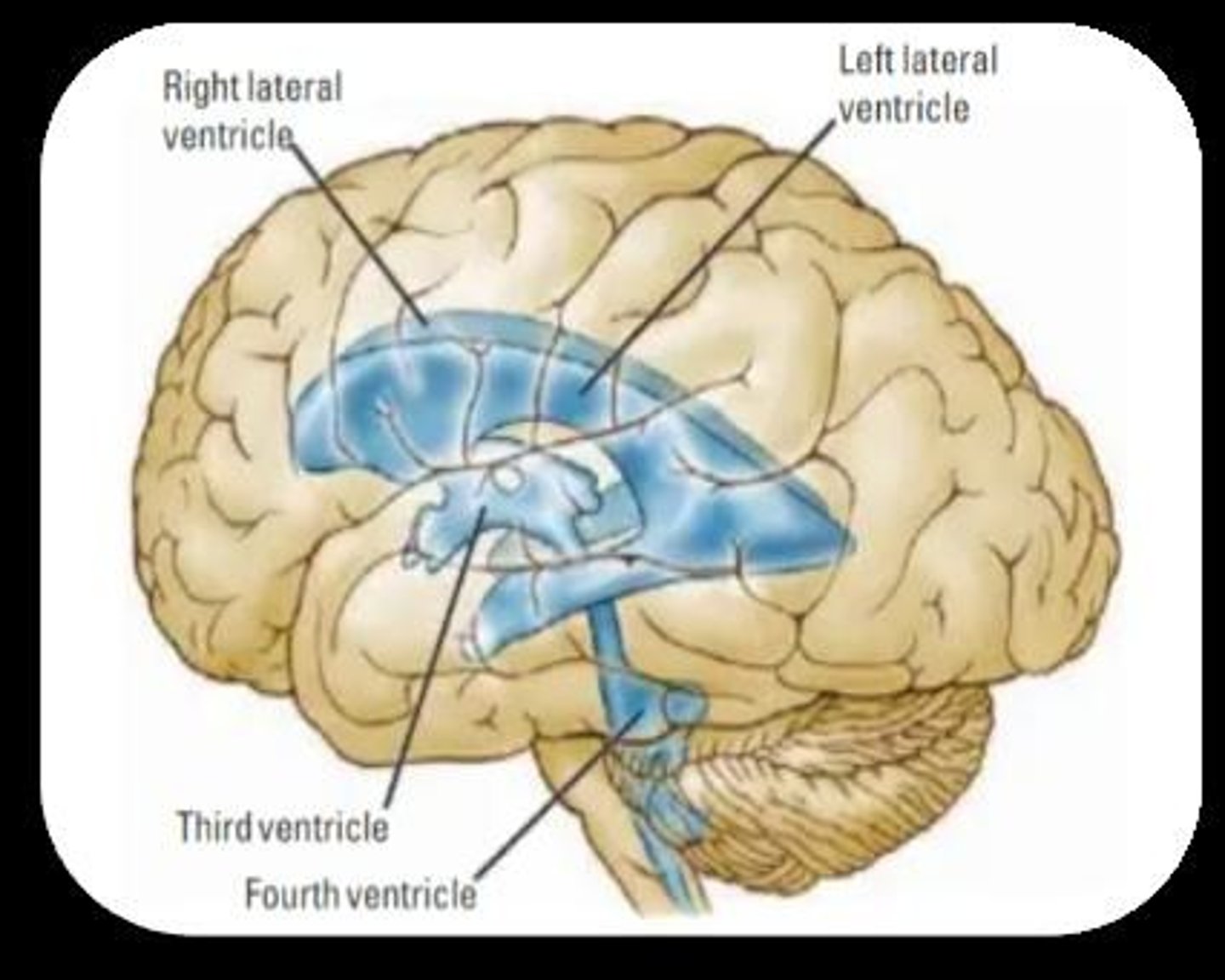
What is a limitation of CT scans regarding grey and white matter?
CT scans cannot differentiate between grey and white matter.
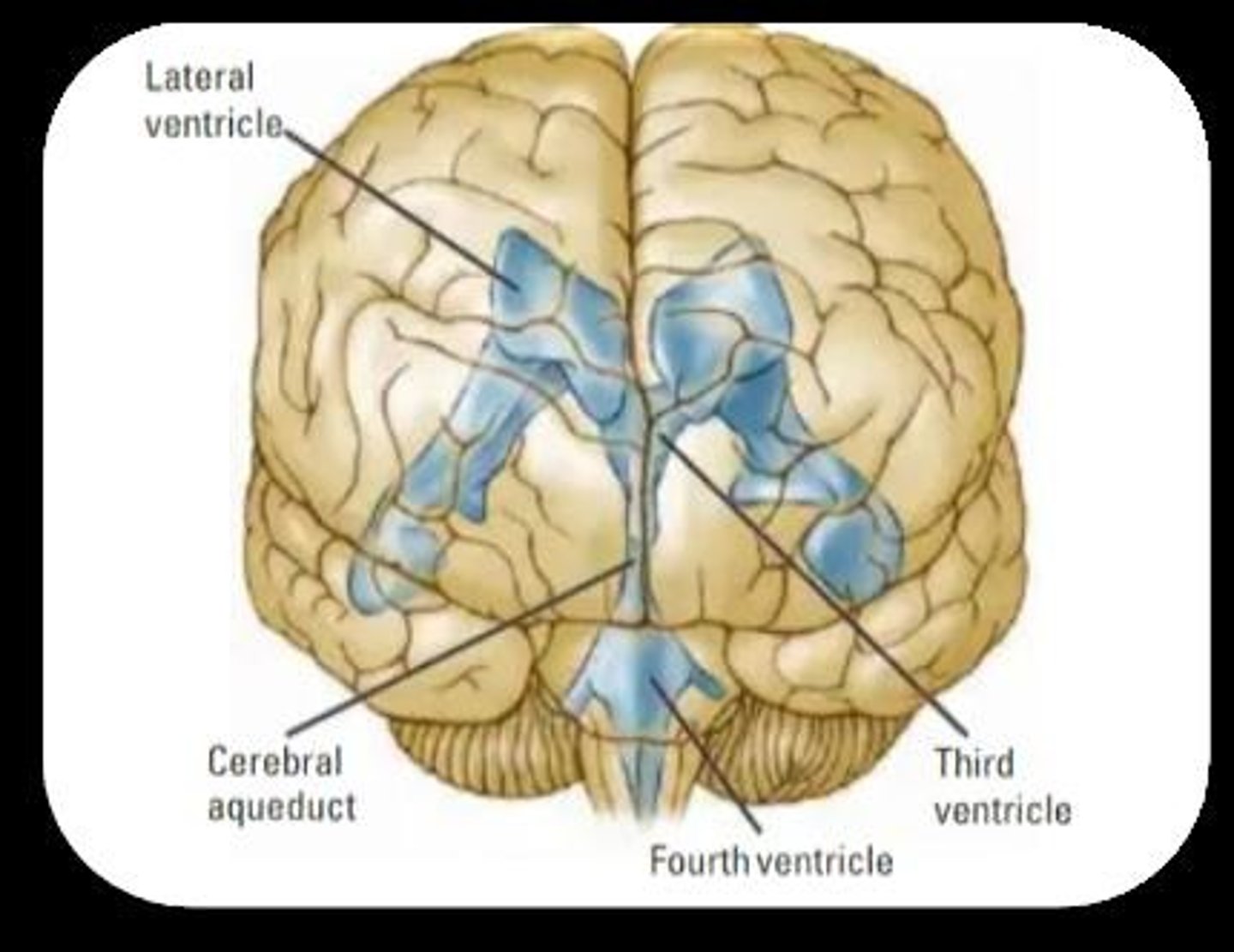
What does MRI use to generate images of the brain?
A large magnet and a radiofrequency pulse.
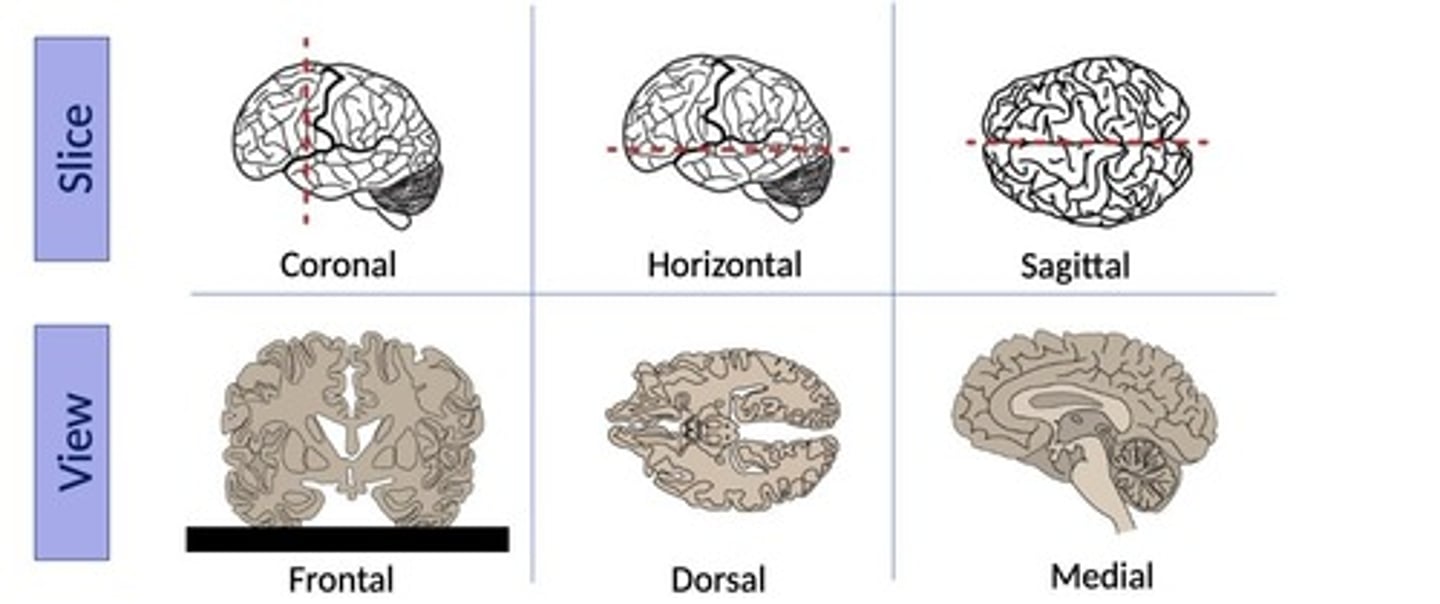
What is the significance of hydrogen atom nuclei in MRI?
They align in the magnetic field, allowing for imaging based on proton density in different brain tissues.
What are the differences between 1.5T, 3T, and 7T MRI machines?
1.5T is widely available, 3T is used for research to see subcortical structures clearly, and 7T is for cutting-edge research but not widely available.
What is the primary use of T1-weighted MRI sequences?
To provide great anatomical detail and structure-based imaging.
What is the primary use of T2-weighted MRI sequences?
To detect fluid-filled structures and edema.